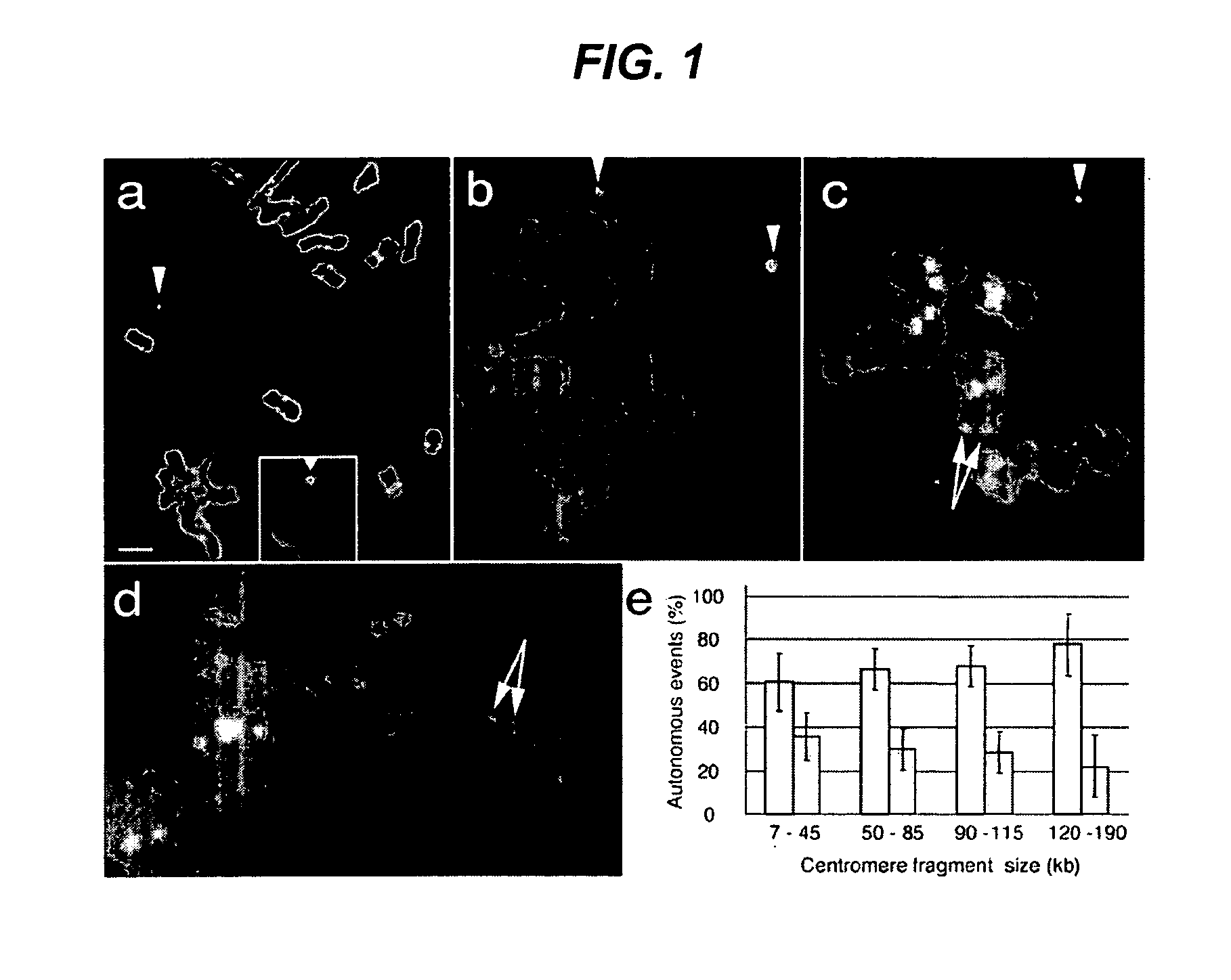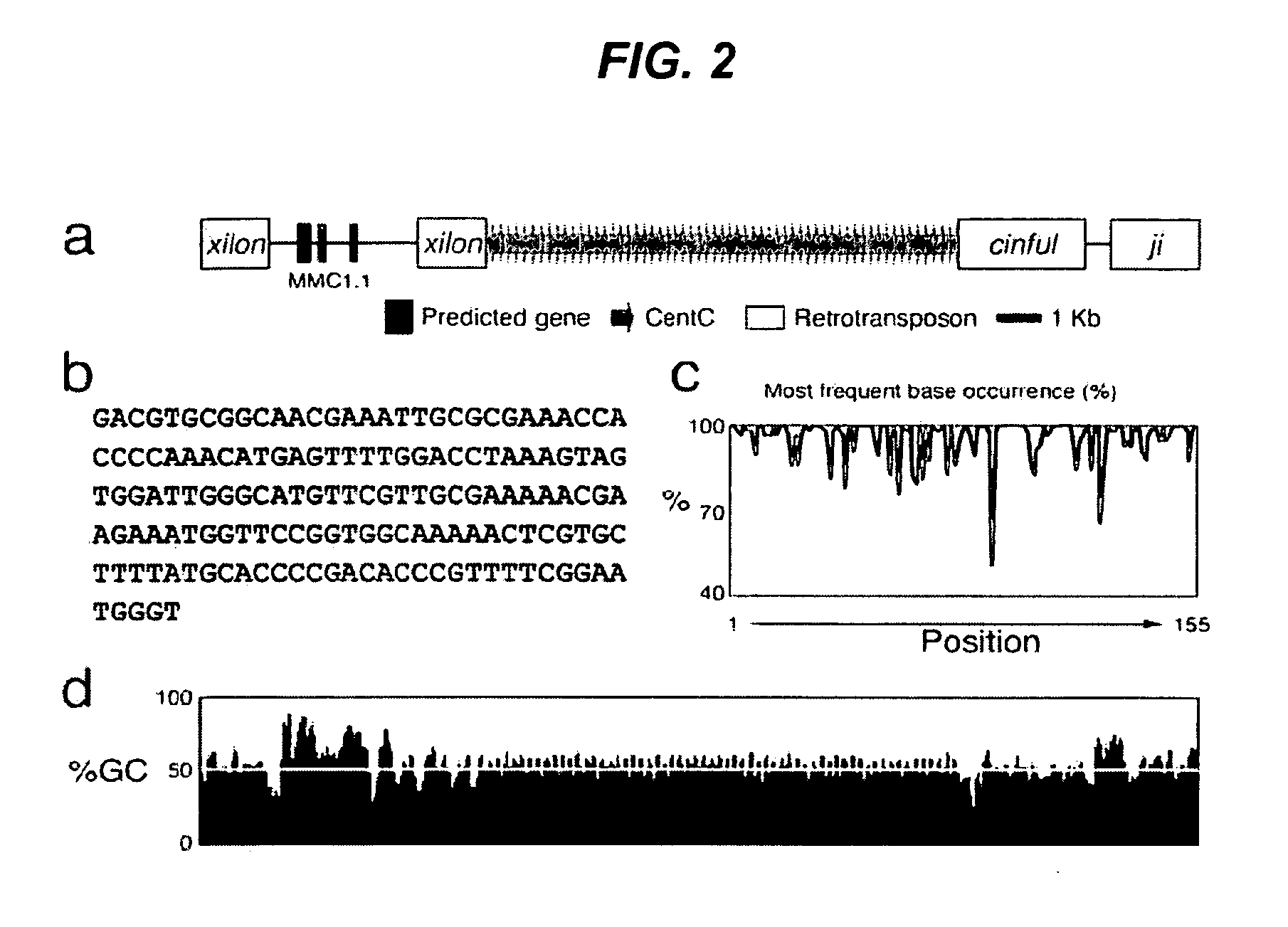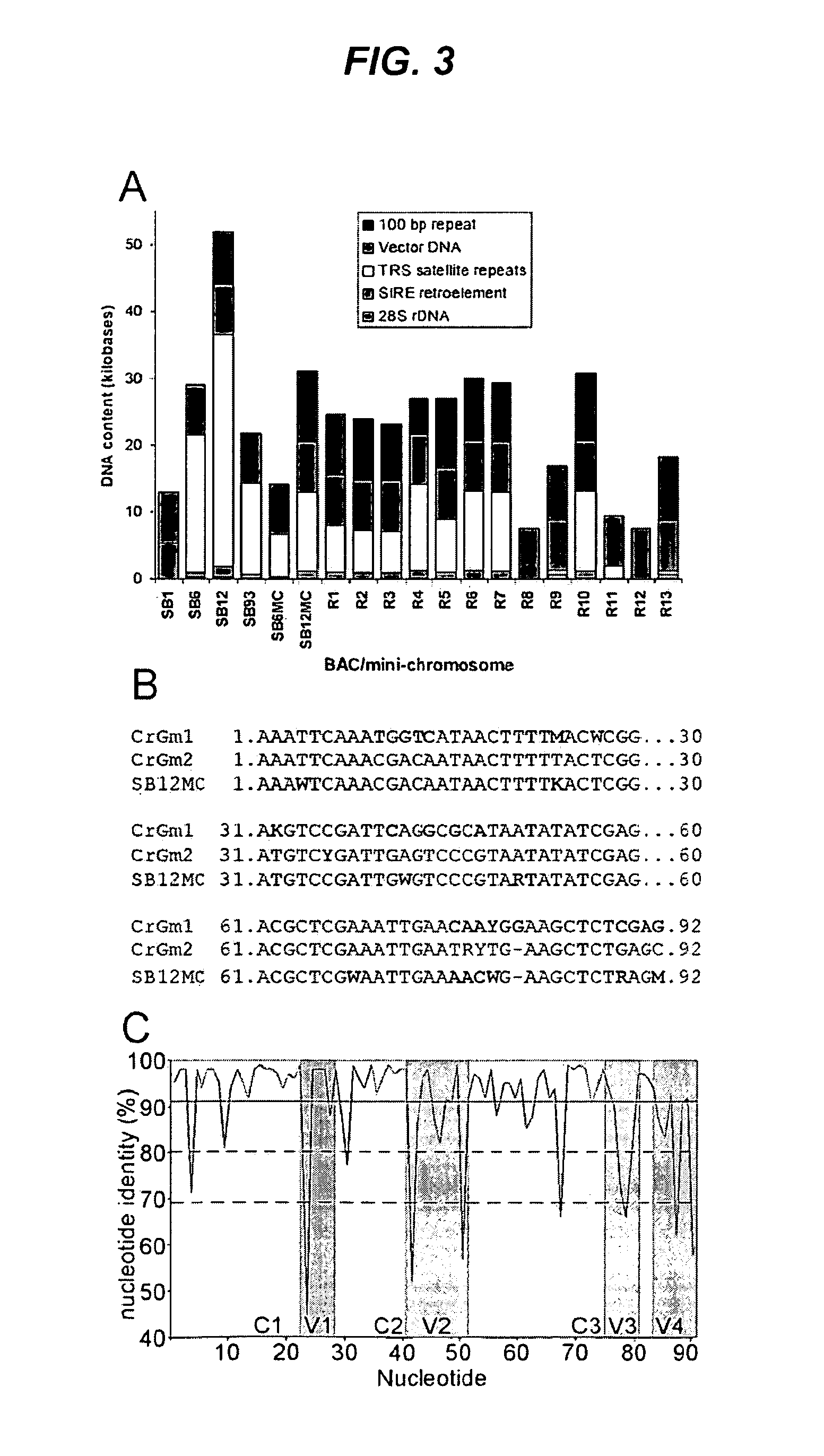Centromere sequences and minichromosomes
a technology of microchromosomes and centroviruses, applied in the field of centrochromosomes and minichromosomes, can solve the problems of unpredictable expression levels, the inability to precisely remove the integrated dna, and the inability to carry new genetic information
- Summary
- Abstract
- Description
- Claims
- Application Information
AI Technical Summary
Benefits of technology
Problems solved by technology
Method used
Image
Examples
example 1
Corn Centromere Discovery
BAC Library Construction
[0344]Two Bacterial Artificial Chromosome (BAC) libraries were constructed from corn genomic DNA. The corn genomic DNA was isolated from corn variety B73 and digested with the restriction enzymes BstYI or MboI. These enzymes were chosen because they are methylation insensitive and therefore can be used to enrich BAC libraries for centromere DNA sequences.
Probe Identification and Selection
[0345]Twenty-three groups of corn repetitive genomic or plastid sequences, including specific centromere-localized sequences, were initially compiled as candidate probes for hybridization with the BAC libraries (Table 4). These probes represented various classes of corn repetitive sequences including satellite repeats (heterochromatic / centromere-specific), retroelements, rDNA, B chromosome-specific repeats, chloroplast and mitochondrion DNA, hypermethylated or hypomethylated DNA fractions, and telomeric DNA.
TABLE 4Maize Repetitive Sequences and Bac Li...
example 2
Construction of Maize Mini-Chromosomes
[0355]The 315 BAC clones identified in Example 1 were grown up and DNA was extracted for mini-chromosome construction using NucleoBond™ Purification Kit (Clontech). To determine the molecular weight of centromere fragments in the BAC libraries, a frozen sample of bacteria harboring a BAC clone was grown in selective liquid media and the BAC DNA harvested using a standard alkaline lysis method. The recovered BAC DNA was restriction digested and resolved on an agarose gel. Centromere fragment size was determined by comparing to a molecular weight standard.
[0356]For each BAC, two types of mini-chromosomes were generated, differing only by the promoter used to express the DsRed gene. Corn ADH promoter was used to express DsRed in mini-chromosomes constructed with pCHR667 and the Arabidopsis UBQ10 promoter was used to express DsRed in mini-chromosomes constructed with pCHR758. Mini-chromosome genetic elements within the pCHR667 and pCHR758 vectors ar...
example 3
Mini-Chromosome Delivery into Maize Cells
[0362]Various methods have been used to deliver DNA into plant cells. These include biological methods, such as viruses, physical methods such as biolistic particle bombardment and silicon carbide whiskers, electrical methods such as electroporation, and chemical methods such as the use of poly-ethylene glycol and other compounds known to stimulate DNA uptake into cells. Biolistic particle bombardment have been the methods that have found most widespread use in plant biotechnology.
Biolistic Particle Delivery of Mini-Chromosomes
[0363]A biolistic particle delivery method was used to transfer corn mini-chromosomes into a number of different corn tissues including suspension cells, plate-grown calli, and immature embryos. For the purpose of transient delivery or selection of stable cell culture modified with a corn mini-chromosome, suspension cells were used for delivery using wet or dry gold delivery methods. An example of such a suspension cult...
PUM
| Property | Measurement | Unit |
|---|---|---|
| Temperature | aaaaa | aaaaa |
| Fraction | aaaaa | aaaaa |
| Fraction | aaaaa | aaaaa |
Abstract
Description
Claims
Application Information
 Login to View More
Login to View More - R&D
- Intellectual Property
- Life Sciences
- Materials
- Tech Scout
- Unparalleled Data Quality
- Higher Quality Content
- 60% Fewer Hallucinations
Browse by: Latest US Patents, China's latest patents, Technical Efficacy Thesaurus, Application Domain, Technology Topic, Popular Technical Reports.
© 2025 PatSnap. All rights reserved.Legal|Privacy policy|Modern Slavery Act Transparency Statement|Sitemap|About US| Contact US: help@patsnap.com



